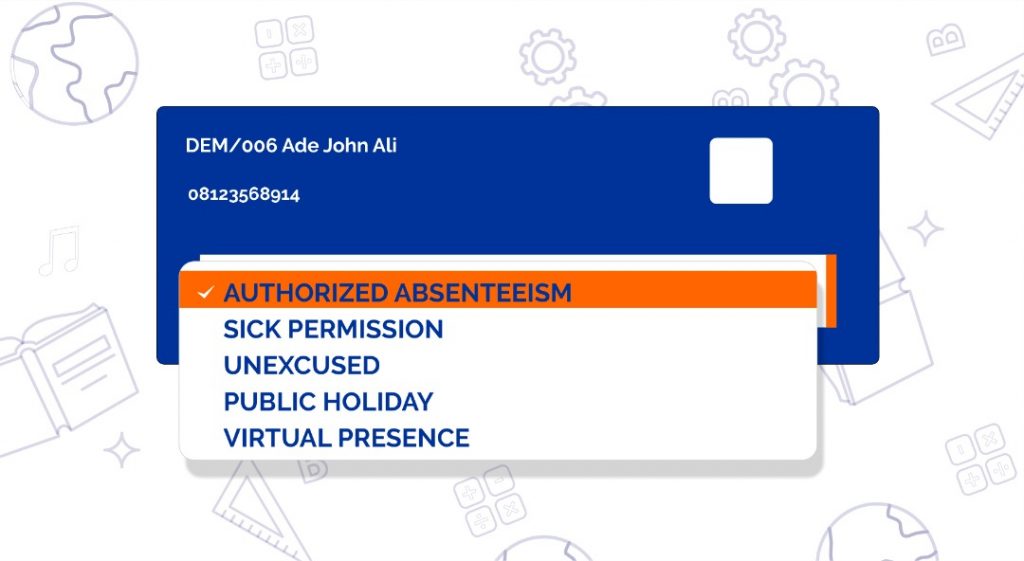Every day counts, so does every school day. This is because the primary rationale for high quality attendance data is the relationship between a student’s availability in class and the student’s achievement.
As a teacher, one can make every single school day count since your effectiveness in learning facilitation is the strongest determinant of each student’s success.
When a student is absent during classes,it reduces even the best teacher’s ability to provide learning opportunities for the student. One of the indicators of a student’s presence and engagement is attendance and as a teacher, it helps you know where your students are headed.
Research has shown that a child’s regular attendance is one of the greatest factors influencing performance and academic success. “Low or irregular attendance can lead to higher repetition and dropout rates,as well as low levels of learning.” (UNESCO, 2015).
A meta-analysis of the relationship between class attendance in college and college grades reveals that attendance has strong relationships with student learning outcomes. These relationships make class attendance a better predictor of student learning outcomes than any other known predictor of academic performance,including scores on standardised admissions tests such as the SAT, high school GPA, study habits, and study skills (Marcus Crede, Sylvia G. Roch, Urszula M. Kieszczynka, June 1, 2010).
Attendance explains how a student’s presence during classes directly relates to the mastery and assimilation of knowledge and skills transferred by the continuous interaction with teachers; it is a controllable aspect of student behaviour and self-regulation that can have an effect on performance.
Attendance positively and negatively affects performance, explaining the student’s prior performances and also motivation. Attendance is important not only because it enables the transfer of content knowledge within a particular student activity, but also because it provides students with access to other specific contextual information and resources that can positively impact their knowledge and sense of belonging.
Consequently, teachers are able to relate more with their students, exposing their strengths and weaknesses, and increasing the chances of knowing possible intervening strategies to implement.
Continuous exposure to learning activities provides students with more content which implies the students have access to more information and orientation, some of which may not be accessible outside the class.
This enables students to stay on track, understand what is expected of them from both their parents and teachers and also foster important interactions.
It also serves as an indicator for student motivation, participation, time management, and adherence to expectations, helping learners develop strategies that support their success.
Before a student fails WAEC, for instance, it is important a teacher studies the bigger picture of each learner, thereby identifying students who may need additional support.
Having attendance data can enable instructors to identify and support students individually in a class and make conscious effort to assist the weaker ones.
Attendance tracking also makes it easy to compare attendance data from other sections or subjects taught by other teachers, hence developing an understanding of best practices for improving student attendance rates and by extension, performance.
Edves supports data collection, enabling students to keep up with daily lessons and assignments, which by extension enables the students to take assignments and tests in ample time.
Embedded in the Edves software is the “attendance module”, which helps teachers observe learners under their care based on the four cognitive domains,thus establishing a regular attendance pattern.
This encourages teachers to observe development of other important patterns of behavior like reliability and good time management skills. With the attendance module, the total performance of a learner per subject is weighed, making room for corrective steps to be taken if need be.
In addition, accurate data can be gathered with notifications sent to parents accordingly. In 2021 alone and with early traction on the feature, Edves had a total record value of 7.2 million student class attendance on its platform.
Consistent attendance enhances student results as they are always informed about all class activities. Also,when parents are involved in the academic wellbeing of their child, there will be an increase in the child’s class attendance, and with Edves attendance, parents can now stay informed about their children’s participation in school.
This simply implies families can receive notifications via SMS and email if a student is late or absent from school. This not only encourages parents to be more involved in their kids’ academic endeavors, but also encourages discipline in learners and participation in class. As a result, students’ performance is boosted and everyone is happy.


